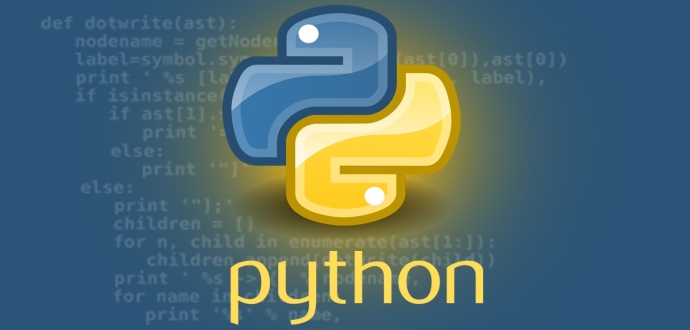Python: A Comprehensive Overview
Python is a high-level, general-purpose programming language. It’s known for its readability, versatility, and large community support. Here’s a breakdown covering its key aspects:
1. Core Features & Philosophy
- Readability: Python emphasizes code readability with its use of significant indentation. This makes it easier to understand and maintain. The guiding principle is “There should be one– and preferably only one –obvious way to do it.” (The Zen of Python).
- Dynamic Typing: You don’t need to explicitly declare the data type of variables. Python infers it at runtime. This makes coding faster but can sometimes lead to runtime errors if types are misused.
- Interpreted: Python code is executed line by line by an interpreter, rather than being compiled into machine code beforehand. This makes development faster, but generally results in slower execution speeds compared to compiled languages like C++.
- High-Level: Python abstracts away many low-level details of computer hardware, making it easier to focus on the problem you’re trying to solve.
- Object-Oriented: Python supports object-oriented programming (OOP) principles like encapsulation, inheritance, and polymorphism. However, it’s not strictly object-oriented; you can also write procedural or functional code.
- Large Standard Library: Python comes with a vast collection of modules and functions that provide pre-built functionality for many common tasks, reducing the need to write code from scratch.
- Cross-Platform: Python runs on many operating systems, including Windows, macOS, Linux, and more.
2. Key Uses & Applications
Python is incredibly versatile and used in a wide range of fields:
- Web Development: Frameworks like Django and Flask make Python a popular choice for building web applications.
- Data Science & Machine Learning: Python is the dominant language in these fields, thanks to libraries like NumPy, Pandas, Scikit-learn, TensorFlow, and PyTorch.
- Scripting & Automation: Python is excellent for automating repetitive tasks, system administration, and creating scripts.
- Scientific Computing: Used in research, simulations, and data analysis.
- Game Development: While not as common as C++, Python can be used for game scripting and prototyping with libraries like Pygame.
- Desktop GUI Applications: Libraries like Tkinter, PyQt, and Kivy allow you to create graphical user interfaces.
- Network Programming: Python can be used to build network applications, servers, and clients.
- Education: Its readability makes it a great language for beginners to learn programming.
- DevOps: Used for infrastructure as code, configuration management, and continuous integration/continuous deployment (CI/CD).
3. Popular Libraries & Frameworks
This is where Python really shines. Here’s a sampling:
- Data Science/Machine Learning:
- NumPy: Fundamental package for numerical computing.
- Pandas: Data manipulation and analysis. Provides DataFrames.
- Scikit-learn: Machine learning algorithms (classification, regression, clustering, etc.).
- TensorFlow & Keras: Deep learning frameworks.
- PyTorch: Another popular deep learning framework.
- Matplotlib & Seaborn: Data visualization.
- Web Development:
- Django: High-level web framework (full-stack).
- Flask: Micro web framework (more flexible, less built-in features).
- Requests: Making HTTP requests.
- GUI Development:
- Tkinter: Built-in GUI library (simple, but can look dated).
- PyQt: Powerful and feature-rich GUI library.
- Kivy: For creating multi-touch applications.
- Other:
- Beautiful Soup: Web scraping.
- SQLAlchemy: Database interaction.
- pytest & unittest: Testing frameworks.
- asyncio: Asynchronous programming.
4. Basic Syntax (Example)
# A simple Python program to print "Hello, world!"
name = "Alice" # Assign a string to the variable 'name'
def greet(person_name): # Define a function called 'greet'
"""This function greets the person passed in as a parameter.""" # Docstring
print(f"Hello, {person_name}!") # Use an f-string for formatted output
greet(name) # Call the function with the 'name' variable
# Example of a loop
for i in range(5):
print(i)
Key Syntax Points
- Indentation: Crucial for defining code blocks (instead of braces like in C++ or Java). Typically 4 spaces.
- Comments: Start with
#. - Variables: Dynamically typed; no explicit type declaration.
- Functions: Defined using
def. - Strings: Enclosed in single quotes (
') or double quotes ("). - f-strings: A convenient way to embed variables within strings (e.g.,
f"Hello, {name}!").
5. Strengths & Weaknesses
Strengths
- Easy to Learn: Simple syntax and readability.
- Large Community: Extensive support and resources.
- Versatile: Suitable for a wide range of applications.
- Extensive Libraries: Huge ecosystem of pre-built modules.
- Cross-Platform: Runs on many operating systems.
Weaknesses
- Speed: Generally slower than compiled languages like C++ or Java. (However, libraries like NumPy are often written in C for performance).
- Global Interpreter Lock (GIL): Limits true multi-threading in CPU-bound tasks. (Workarounds exist, like multiprocessing).
- Dynamic Typing: Can lead to runtime errors if types are not handled carefully.
6. Resources for Learning
- Official Python Website: https://www.python.org/
- Codecademy: https://www.codecademy.com/learn/learn-python-3
- Coursera & edX: Offer various Python courses.
- Real Python: https://realpython.com/ (Excellent tutorials)
- Stack Overflow: A great resource for finding answers to specific questions.
- Python Documentation: https://docs.python.org/3/
In conclusion, Python is a powerful and versatile language that’s well-suited for a wide range of tasks. Its readability, extensive libraries, and large community make it a popular choice for both beginners and experienced programmers.
Do you have any specific questions about Python that you’d like me to answer? For example, are you interested in:
- A specific application of Python (e.g., web development)?
- A particular library or framework?
- Comparing Python to another language?
- Getting started with Python installation and setup?
